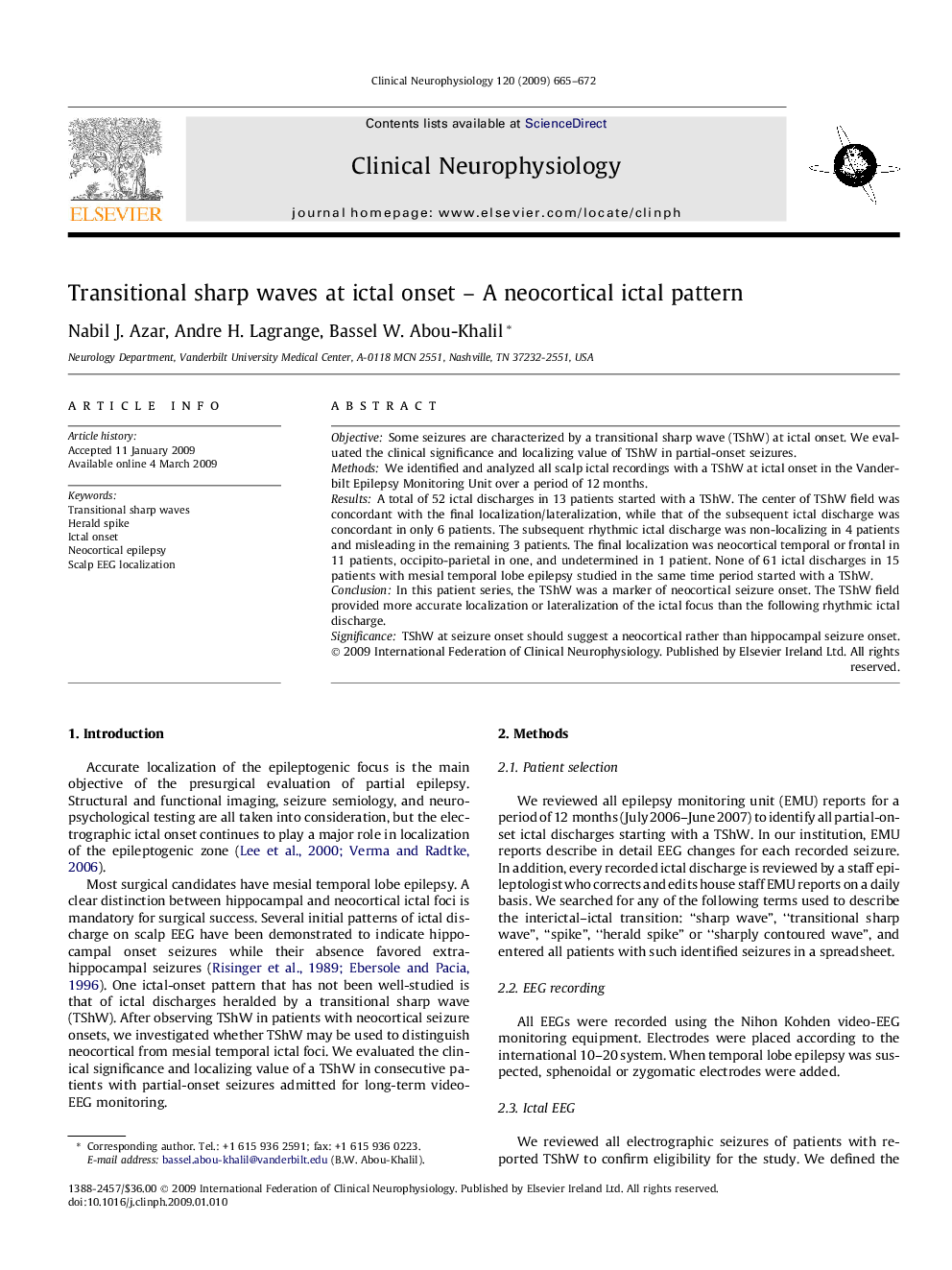| Article ID | Journal | Published Year | Pages | File Type |
|---|---|---|---|---|
| 3046310 | Clinical Neurophysiology | 2009 | 8 Pages |
ObjectiveSome seizures are characterized by a transitional sharp wave (TShW) at ictal onset. We evaluated the clinical significance and localizing value of TShW in partial-onset seizures.MethodsWe identified and analyzed all scalp ictal recordings with a TShW at ictal onset in the Vanderbilt Epilepsy Monitoring Unit over a period of 12 months.ResultsA total of 52 ictal discharges in 13 patients started with a TShW. The center of TShW field was concordant with the final localization/lateralization, while that of the subsequent ictal discharge was concordant in only 6 patients. The subsequent rhythmic ictal discharge was non-localizing in 4 patients and misleading in the remaining 3 patients. The final localization was neocortical temporal or frontal in 11 patients, occipito-parietal in one, and undetermined in 1 patient. None of 61 ictal discharges in 15 patients with mesial temporal lobe epilepsy studied in the same time period started with a TShW.ConclusionIn this patient series, the TShW was a marker of neocortical seizure onset. The TShW field provided more accurate localization or lateralization of the ictal focus than the following rhythmic ictal discharge.SignificanceTShW at seizure onset should suggest a neocortical rather than hippocampal seizure onset.
